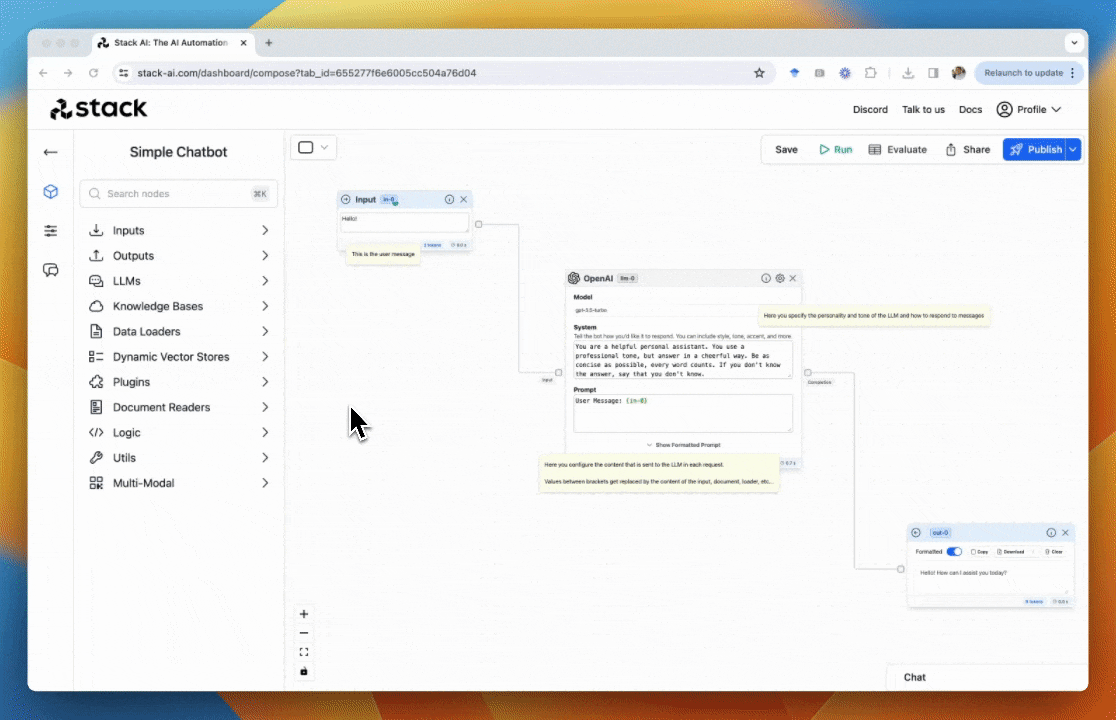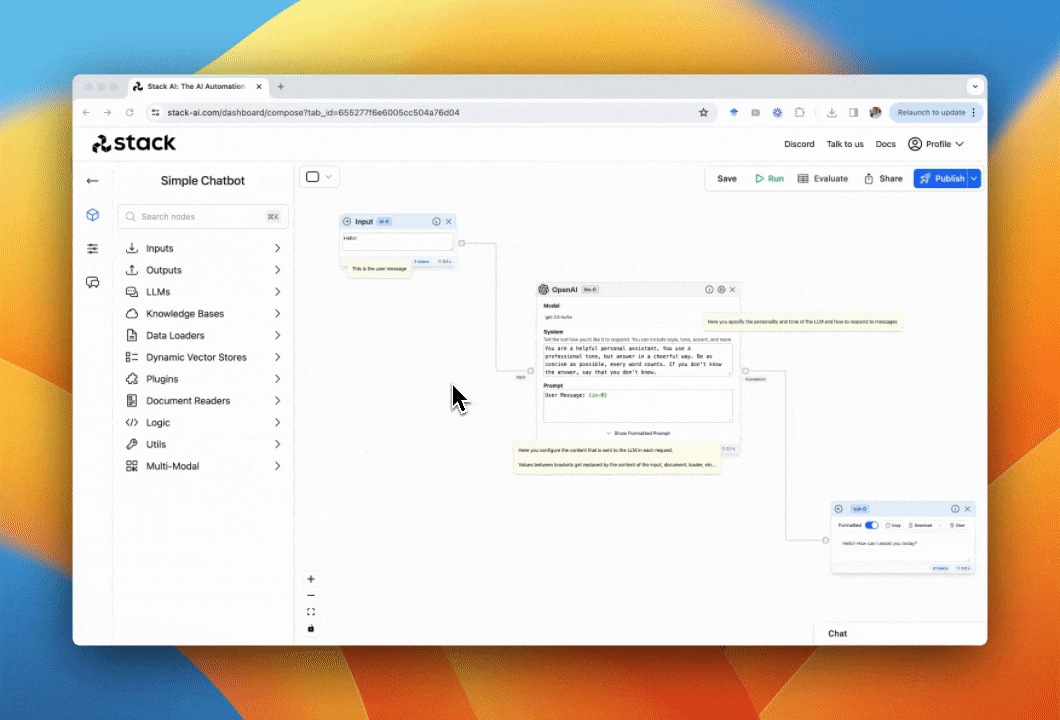Deployer Guide
How to deploy
Learn how to deploy Stack AI solutions. Step-by-step instructions to deploy AI-powered applications effectively and efficiently across your organization.
How to deploy
Once your flow is ready for production, you can deploy it as an API. Just click on deploy to get a production-ready version of your model.

Get your RestAPI
To obtain your API just go to the deploy section of the Stack AI tool.

In this section, you will receive a code snippet to call your flow via a POST request in Python, JavaScript, and cURL.
Some quick facts:
- This request receives all the inputs to the LLM as the body.
- This request returns the value of all the outputs to the LLM as a JSON.
- The API supports auto-scaling for a large volume of requests.
- Stack protects this API with the Token of your organization
Exposed Inputs
As part of your deployment, you can specify the following values as inputs in the request body:
- Input nodes
in-. - User ID for LLM Memory
user_id- This value will create a database entry with the conversation history between each user and the LLM.
- String nodes
string-. - URL nodes
url-. - Inline document nodes
indoc-. - Image to Text
img2txt-. - Audio to Text Voice
audio2text-.
If the values for these inputs are not specified, the flow will use the values from the flow.

